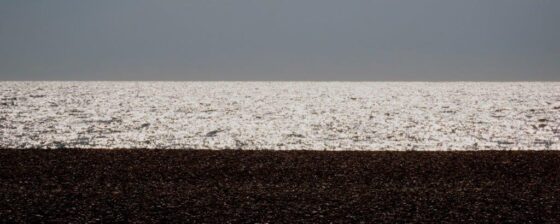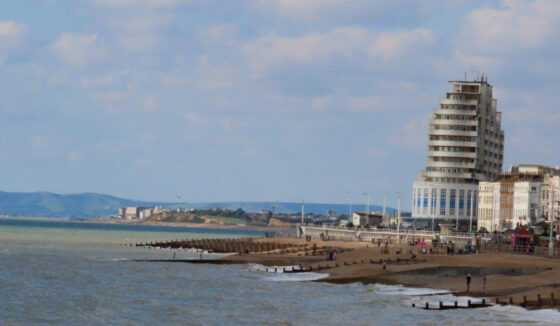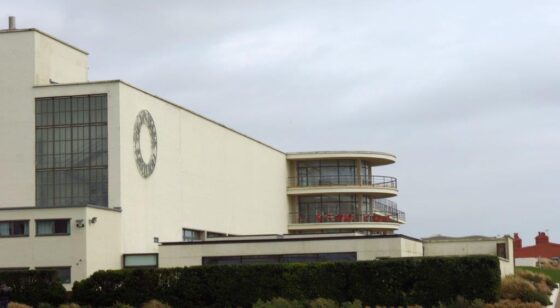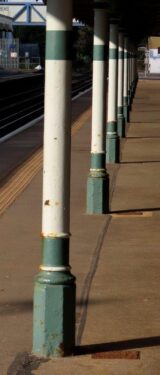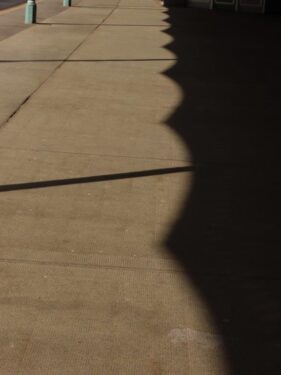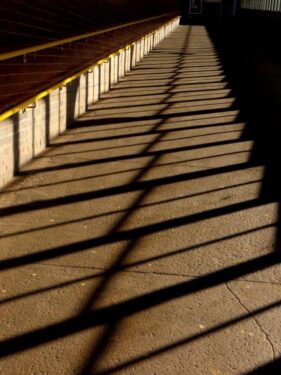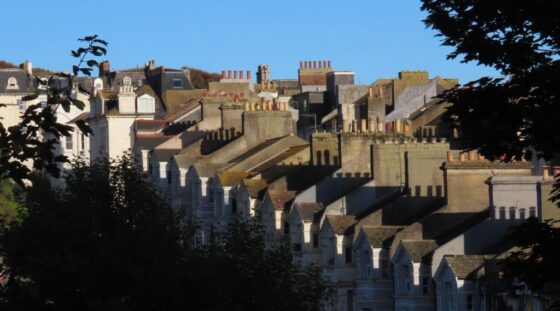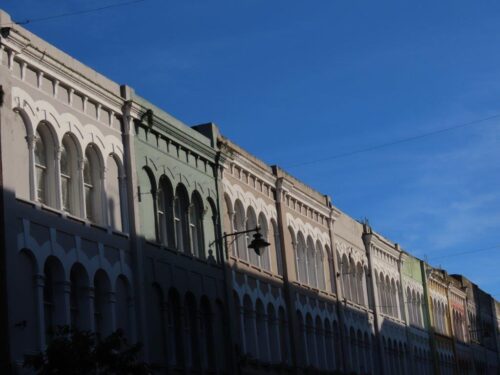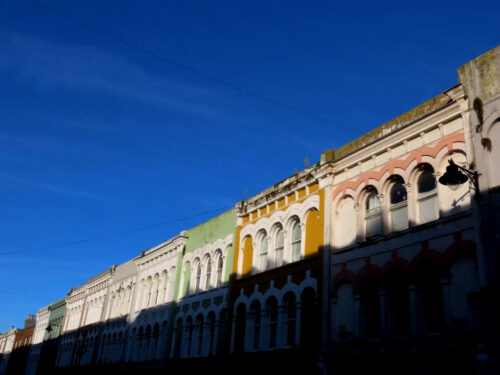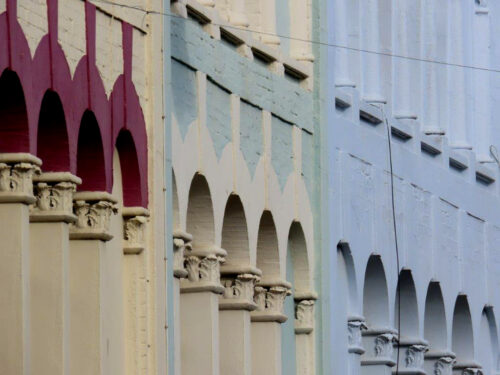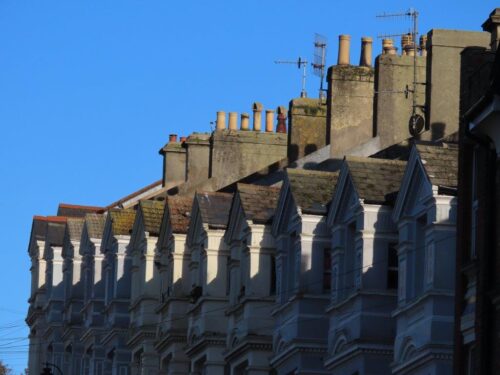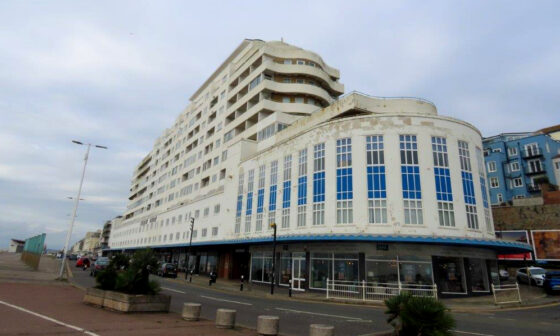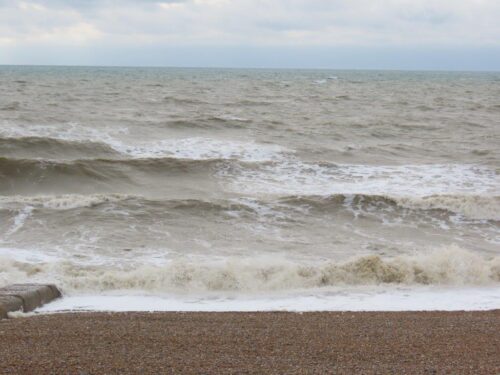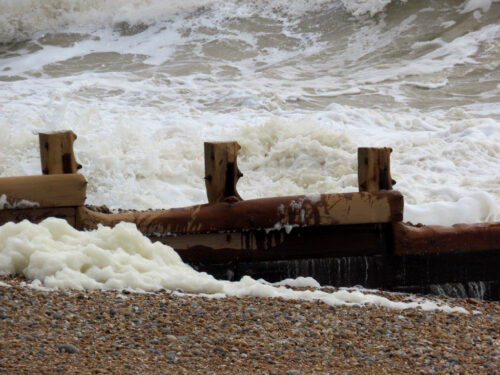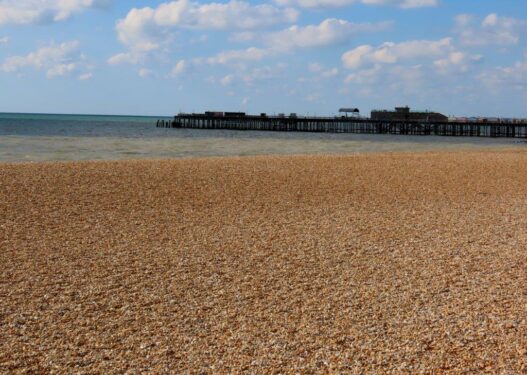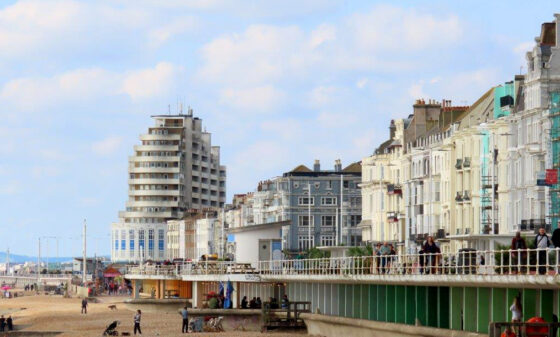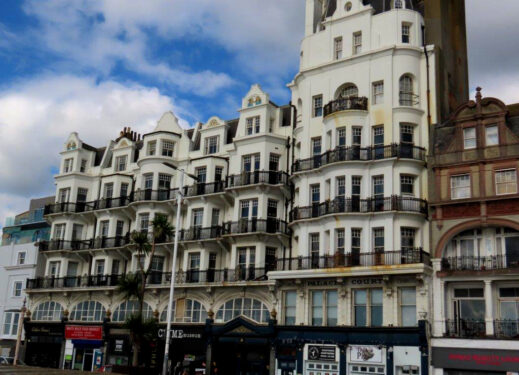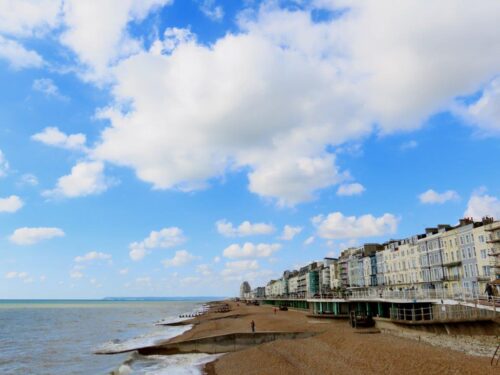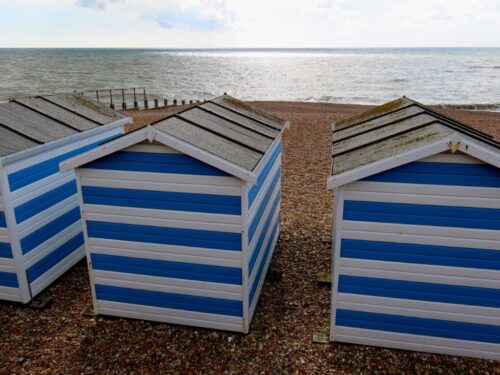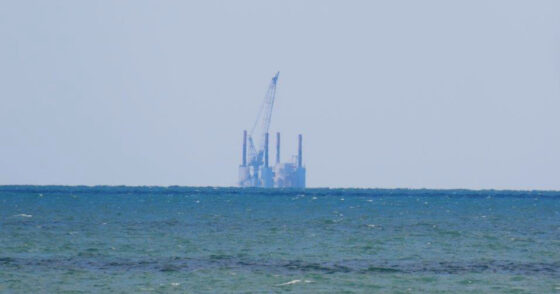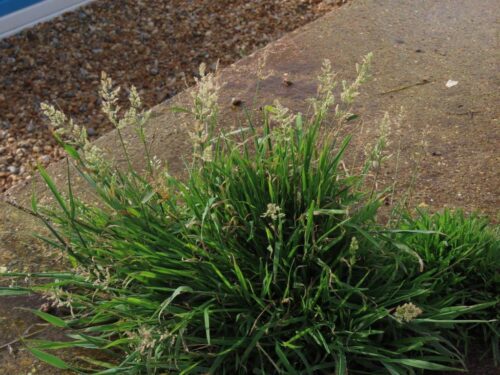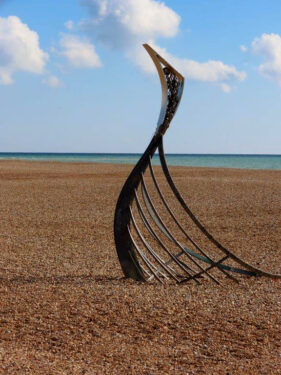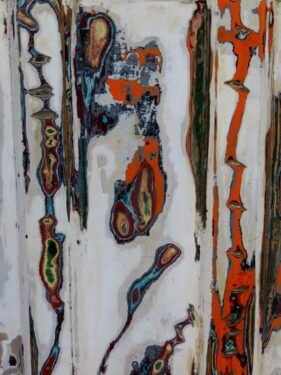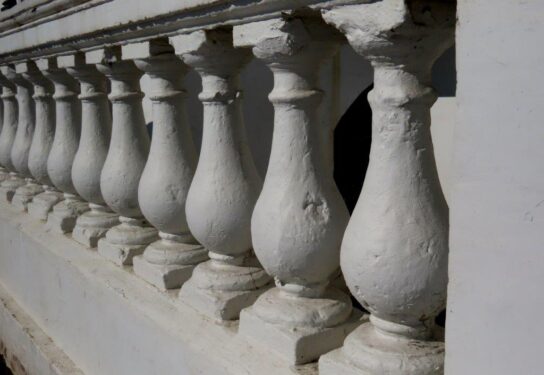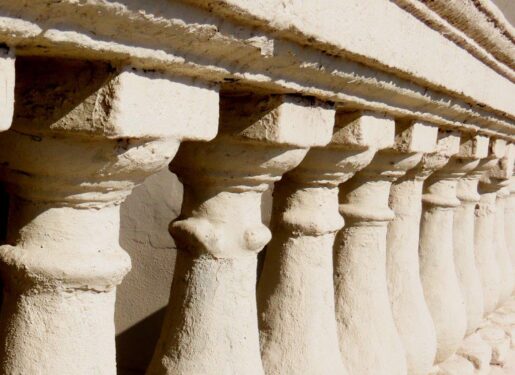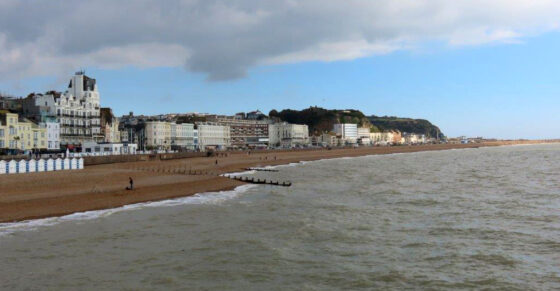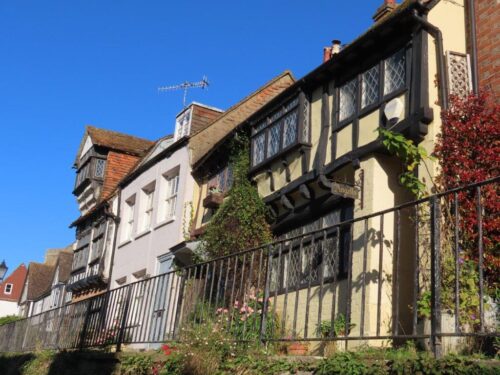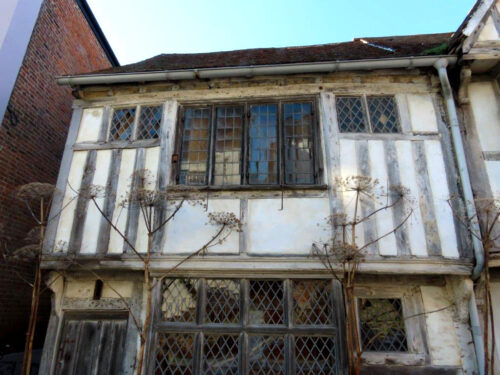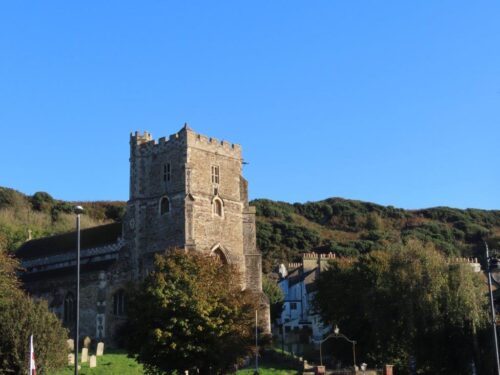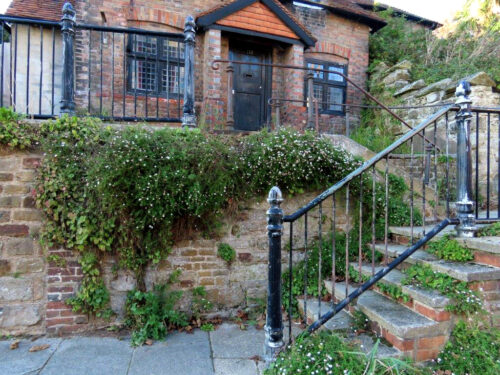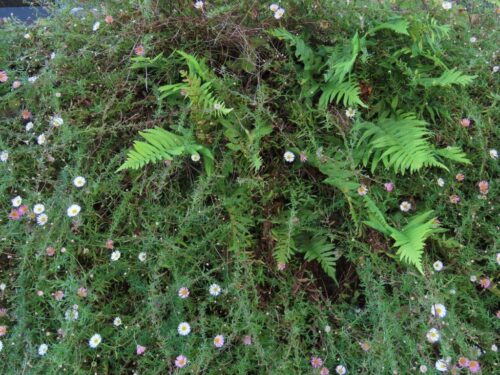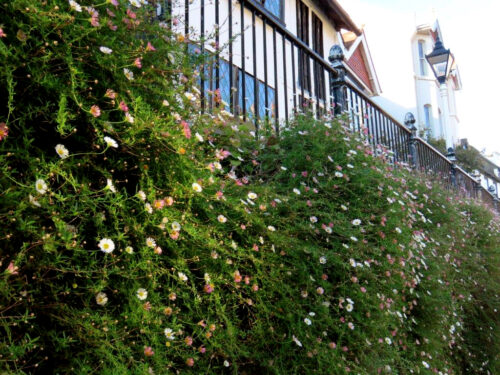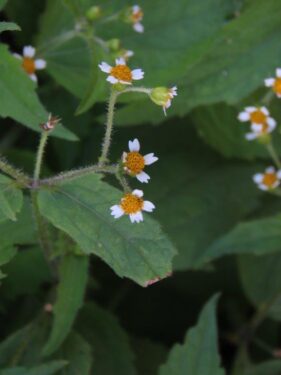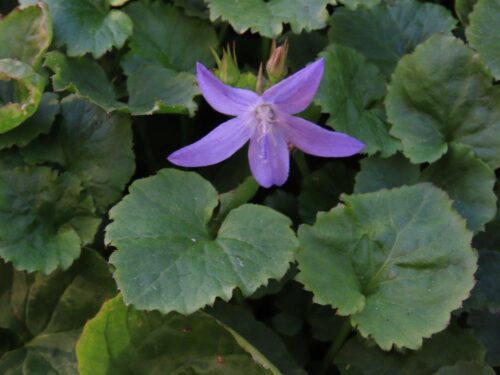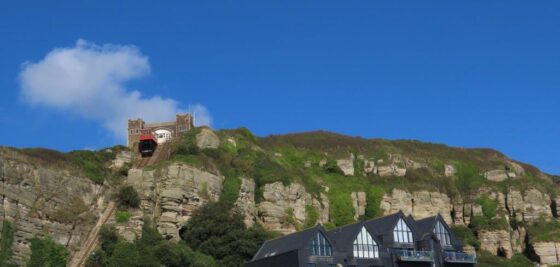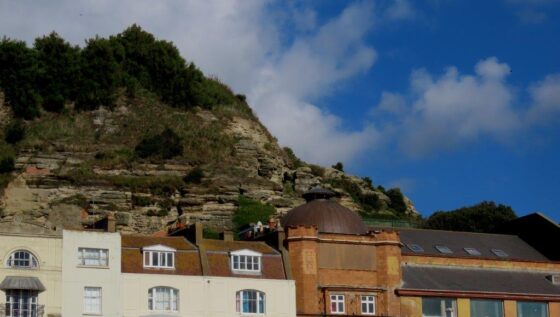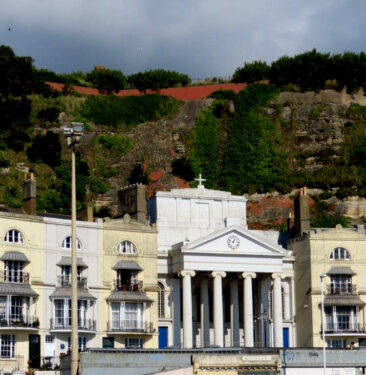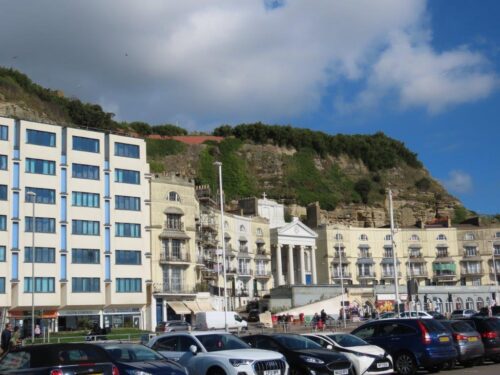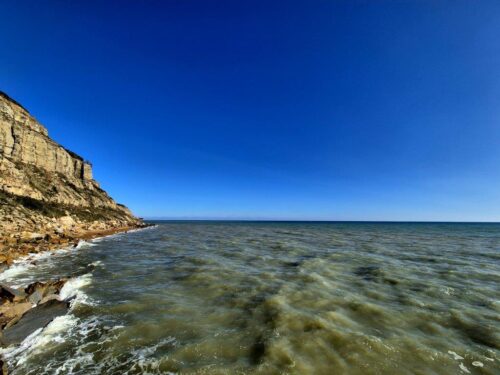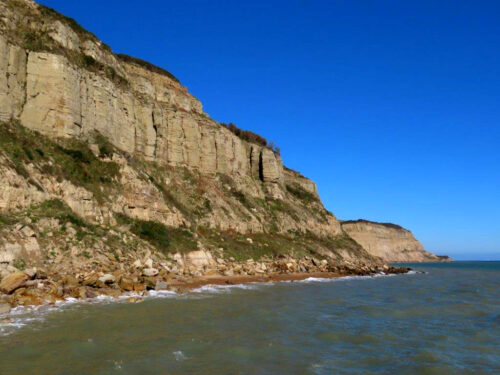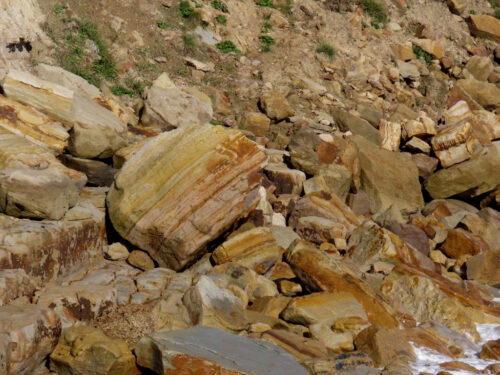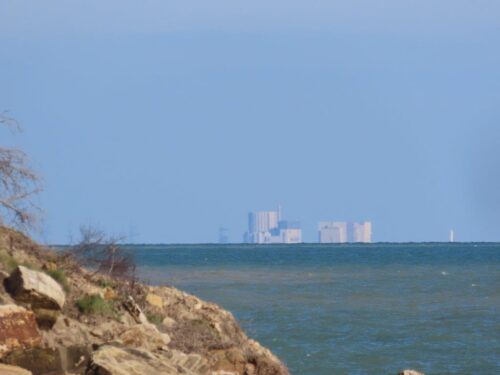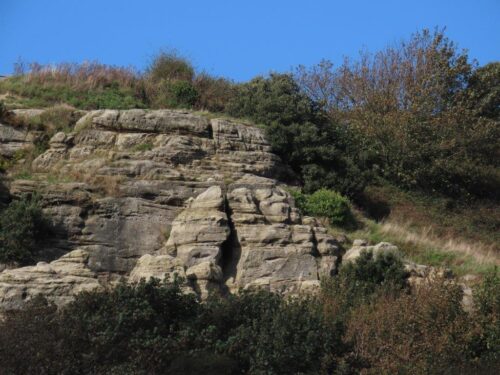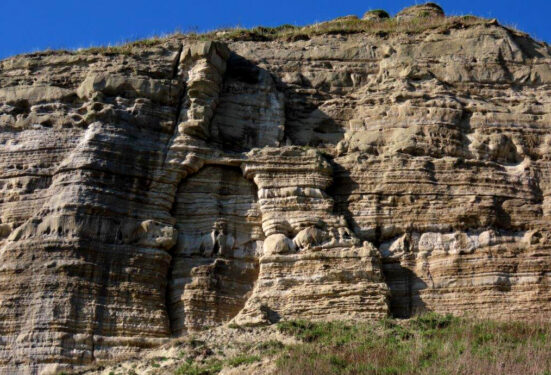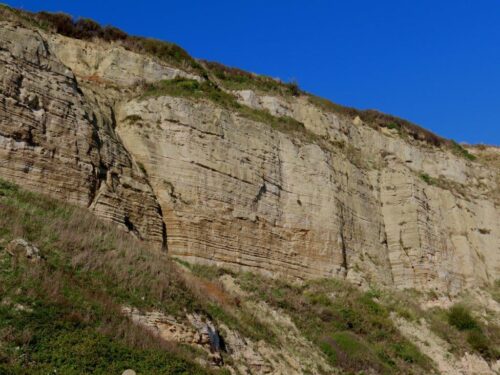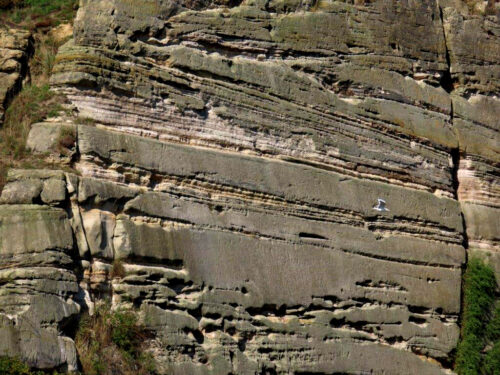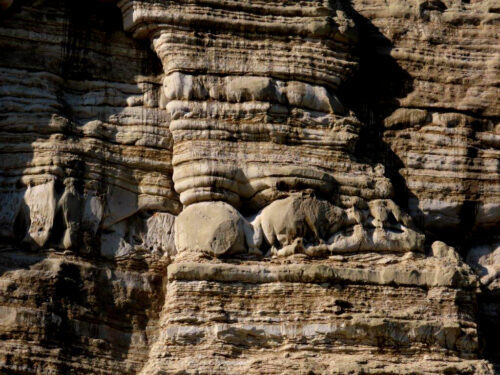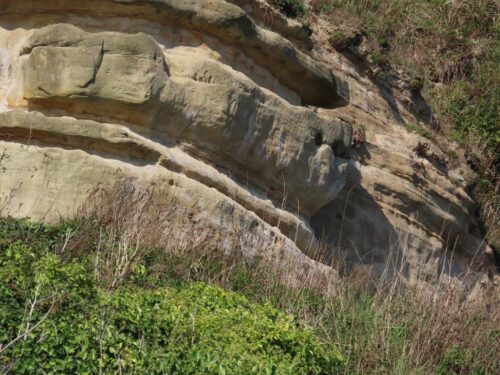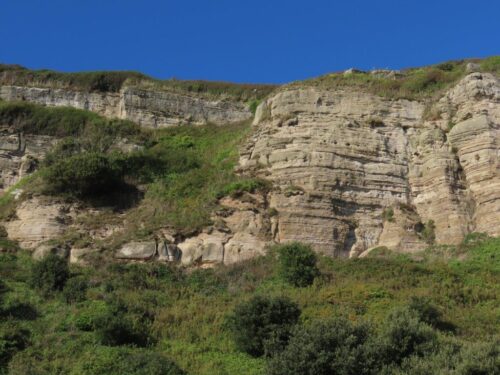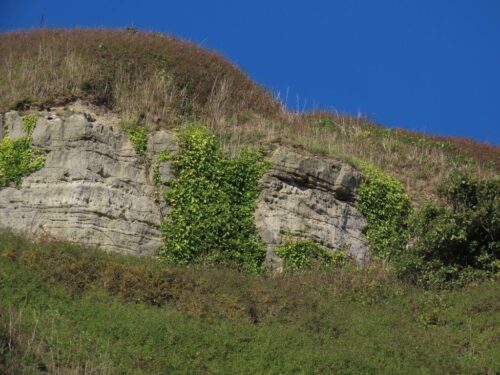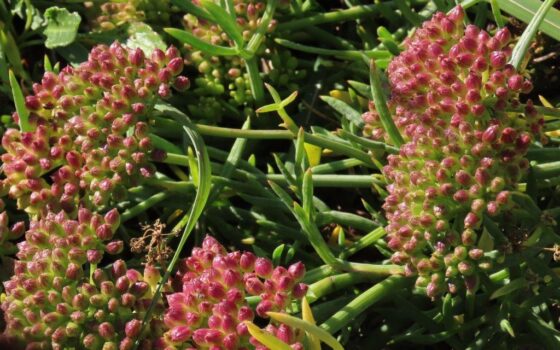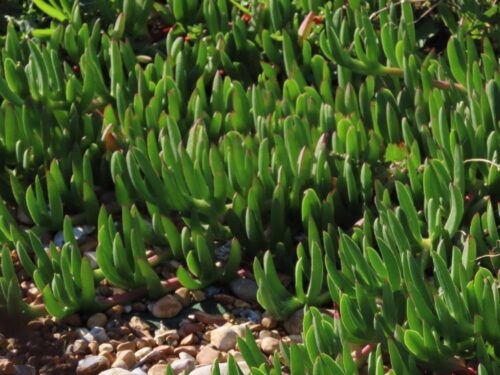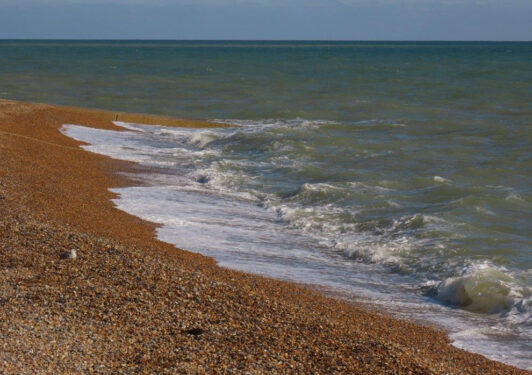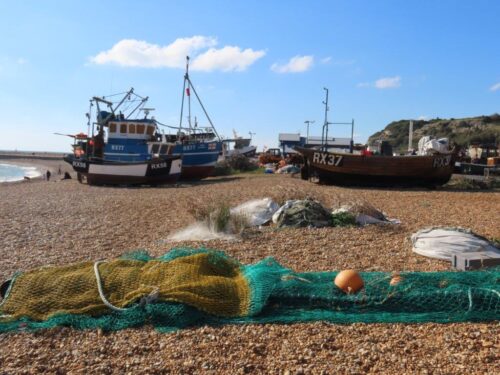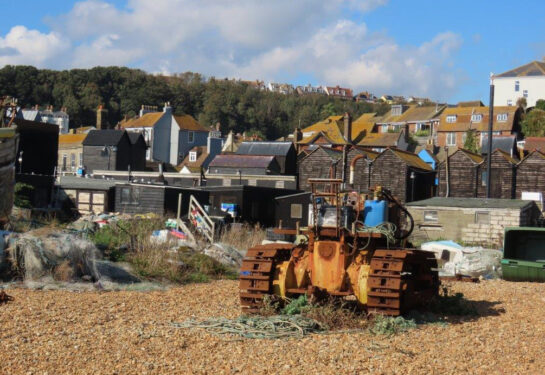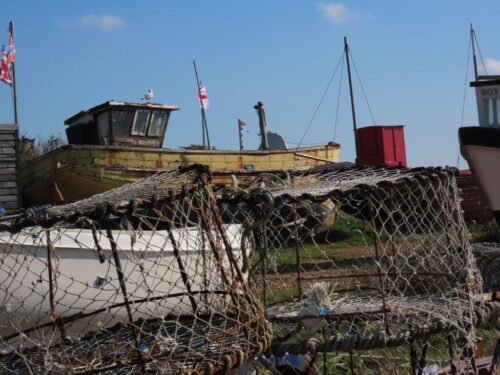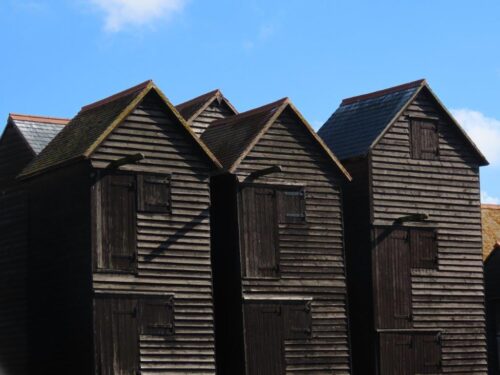And so on our second afternoon we headed down from Tunbridge Wells to the coast of East Sussex, taking in Bexhill, St Leonards and Hastings, all conveniently linked by regular and always prompt trains.
We stayed in Bexhill, simply because of a gig we wanted to see at the iconic De La Warr Pavilion – Oysterband and June Tabor, on their final ever tour. Yes, that was very good, as was an Italian meal at Trattoria Italiana preceded by a restorative walk in the dark along the prom listening to waves on shingle, but otherwise we couldn’t find much to recommend it…
In fact most interesting spot apart from the Pavilion was the railway station, both as a way out to pastures new and in sunshine at least providing lots of opportunity for interesting photos of receding vistas:
A couple of times we had chance to wander around St Leonards where the feel was very different, careworn maybe, but not tired, and seemingly with more pride in itself. And the Dandelion Deli provided an excellent breakfast!
Our second visit was as the weather was starting to break on our final day, but ‘bracing’ is a positive attribute for any seaside town, and the waves and sea-foam were quite spectacular.
We have been to Hastings before, a couple of years ago: we enjoyed it then, and with a sunny day in the forecast it seemed a good place to spend our full day on the coast. Not just for the food of course – outstanding fish and chips at Maggie’s, on the beach among the iconic sail-lofts, – but that helped!
We started the day walking the sea-front of ‘new’ Hastings, down to its pier. ‘English Seaside Architecture’ on one side, the large shingle beach, complete with beach-huts, and expansive views of the Channel. Sadly, between the two, a busy road: whoever though it a good idea to sever a town from its main asset?
The waves were lapping up the shore, enough to fill the air with shingle gently clashing followed by the gurgle of each wave sinking into the beach. Sea Kale was growing along the very upper beach where waves so rarely reach, along with Red Valerian, and patches especially on the prom of Water Bent, a newly arrived grass on our shores, spreading rapidly but not it seems displacing anything much – it helps green the arid cracks where nothing else lives.
Around the town, there was plenty of art to be found, both in the form of official installations but also ‘found’ art created by the transient interplay of sunlight with concrete…
Out then to Old Hastings …
… where the split-level street provide a wonderful habitat for attractive wall plants, from Polypody and Mexican Fleabane to Shaggy Soldier and Trailing Bellflower.
Under the gaze of the cliffs and castle, all the trappings of a seaside destination were there, very attractive until you lower the line of vision to car-park level….
Thankfully at the eastern end, Rock-a-Nore cliffs are still unspoilt and majestic, home to Peregrines above, Rock Pipits among the collapsed boulders, and sweeping views, along to Dungeness nuclear power station, some 40km distant but reaching up defiantly from below the horizon. The Earth really is spherical!
The sandstone cliffs were a picturesque mix of strata, faces and colonising vegetation …
… with plants including Tree Mallow and Rock Samphire, but worryingly large amounts of the aggressively invasive space-filler Hottentot-fig. Once our winters were too reliably frosty for it to survive without protection, but no longer it seems.
And then all that was left was to wander back along the shingle beach among the fishing paraphernalia, the iconic sail lofts and of course, Maggie’s fish and chips! A great finale.
Well, not quite the last act of our break. On our way home by train, we had decided to stop off for a few hours in Battle. Clearly a famous historic site, but the weather by then was such that we thought spending money to wander round a field in the wind and rain not especially enticing. So we took refuge in two lovely pubs (the Chequers Inn and the King’s Head) and listened to the incessant roar of busy traffic on the A2100. Another part of the south-east where car is clearly king: there are not even any pedestrian crossings to easily explore the other side of the street: heaven forbid that a motorist should be inconvenienced by a mere pedestrian. But, as we demonstrated, a visit by public transport, helping support local hostelries, is perfectly possible!
For other blogs in this series see:
An autumn break in Kent and Sussex: part 1 – Tunbridge Wells | Chris Gibson Wildlife
An autumn break in Kent and Sussex: part 2 – Eridge Rocks | Chris Gibson Wildlife
